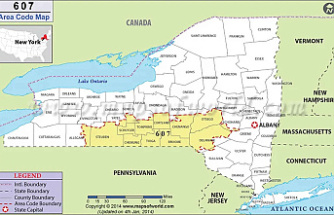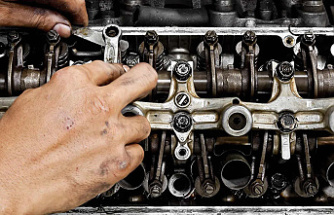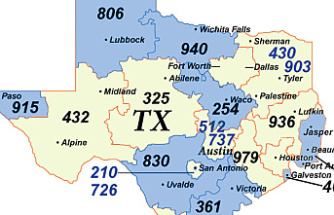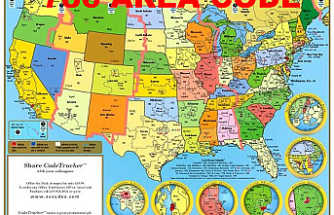Southern California air-quality officials say they need the U.S. Environmental Protection Agency to adopt regulations requiring low-polluting big rig trucks if they hope to have any chance of meeting federal smog standards.
In December, the Obama administration promised to adopt federal regulations that would require a new generation of clean-burning diesel trucks.
The strict emissions limits were expected to begin in seven years, and experts said they would slash smog-forming emissions from big rig trucks, Southern California’s biggest source of smog.
But President Donald Trump has different priorities, and as former Oklahoma Attorney General Scott Pruitt takes control of the EPA, it’s unclear whether the proposed regulations for new trucks remain on track.
Some clear-air advocates say they are deeply concerned because Pruitt repeatedly sued the EPA to block federal environmental regulations when he was Oklahoma’s attorney general.
EPA officials this week did not respond to multiple requests seeking information about the status of the big rig truck regulations.
Wayne Nastri, the executive officer of the South Coast Air Quality Management District, said his agency plans to push for the new rules because they’re essential to the district’s strategy to clean up lung-irritating ozone, the hallmark pollutant summer smog.
“We are looking to reach out and talk with the (EPA) leadership once it is established,” Nastri said in a telephone interview.
Nastri is no stranger to the EPA. He served as the agency’s southwestern region administrator from November 2001 until 2009 after being appointed to the post by former President George W. Bush.
Nastri said he’s hopeful that Pruitt will see “tremendous health and economic benefits” in moving forward with new truck rules.
Worst in the nation
Southern California has the worst ground-level ozone problem in the nation. Last year, ozone levels within the region’s ocean-to-mountains air basin exceeded the federal health standard during 132 days.
Ozone aggravates cardiac and respiratory conditions and causes nausea, coughs, burning eyes and runny noses. It’s also associated with missed school and work days and increases early deaths, studies have found.
It forms when nitrogen oxides react with other pollutants in the atmosphere.
Big rig trucks are the region’s biggest source of nitrogen oxides, followed by heavy construction equipment and ships, according to air district data. Most big rigs are immune from California’s tougher tailpipe emission standards because they roll in from out of state, Nastri said.
The EPA, however, hasn’t updated the national heavy duty truck emission standard for 16 years.
So in June, the South Coast officials petitioned the EPA for new truck rules that would limit nitrogen oxides to 10 percent of what is allowed in today’s new models. They followed up with a trip to Washington, D.C., for meetings with EPA and congressional officials.
More than a dozen other state and regional environmental agencies joined them in the petition.
Everything seemed to be on track.
In the waning days of the Obama administration, the EPA vowed to embark on a years-long rule-making process, although the exact amount of pollution reductions would be determined later, after more analysis. The new rules would start in 2024, and also require carbon emission cuts to help fight climate change, said a Dec. 20 memorandum made public by the EPA.
New EPA director
The fate of this rule-making is now up to Pruitt, who was confirmed by the Senate on Feb. 17 by a mostly party-line vote of 52-46.
Pruitt did not address truck pollution specifically in his confirmation hearing before the Senate Committee on Environment and Public Works.
But in his opening statement, he asked rhetorically, “What could be more important than protecting our nation’s waters, improving our air. . . all the while protecting the health and welfare of our people?”
He also said that “we have work to do in reducing the “criteria pollutants,” which includes ozone.
When he was Oklahoma’s attorney general, Pruitt sued the EPA 14 times to block regulations that were mostly opposed by industry.
One suit challenged the federal health standard for ozone pollution, which was imposed by the Obama administration in 2015. This standard of no more than 70 parts per billion averaged over eight hours each day was at the high end of a range of standards recommended by a panel of scientists.
The panel had reviewed hundreds of health studies.
Pruitt also signed off on other lawsuits that took aim at regulations that reduce mercury pollution, pollution from power plants, and pollution from oil drilling and production sites, and a rule limiting power-plant pollution that crosses state lines, among other complaints in federal court.
Jeff Holmstead, an environmental law attorney in Washington, D.C., who oversaw the EPA’s air pollution and radiation division during the first term of the Bush administration, was optimistic that Pruitt would follow through with new truck rules.
“Pruitt has made it clear that he wants to refocus EPA on improving air quality by reducing conventional pollution like NOx (nitrogen oxides),” Holmstead said in an email. “If there is a cost-effective way for engine makers to further reduce NOx from heavy duty trucks, then I would expect Pruitt to issue new regulations to require it. “
But Adrian Martinez, Los Angeles attorney for Earthjustice, said the truck rules are in jeopardy.
“This going to be a dark four years for people’s health,” Martinez said. “I am deeply concerned Pruitt will not advance regulations need to protect people’s health.”
Technology available
A new generation of clean trucks is technologically doable, Nastri said.
Natural-gas bus and garbage truck engines already meet the very low emission standard that was sought by the air district, and such engines could be made larger for heavy- duty trucks, said Wayne Miller, an environmental engineering professor at UC Riverside.
While technology is available to cut emissions from diesel engines, it’s not clear whether the 90 percent reduction sought by the air district can be achieved, but great progress can be made, Miller said.
Jed R. Mandel, the president of the Engine Manufacturers Association in Chicago, said reducing nitrogen oxide emissions with pollution controls can hurt fuel efficiency, which results in additional carbon emissions.
But his association is ready to work with the EPA to develop cleaner diesel engines.
Meanwhile, attorney Ted Hadzi-Antich of the Center for the American Future, said the emission rules sought by the air district are unfair parts of the country that don’t have severe ozone pollution problems.
The center is the legal arm of the Texas Public Policy Foundation, an Austin, Texas-based conservative think tank that promotes “personal responsibility and free enterprise.”
“You really need a local solution,” said Hadzi-Antich, who represents trucking companies in California”
He said he expects tougher emissions rules to increase the price of trucks, which would then force smaller hauling companies out business. This, in turn, would increase shipping costs because there would be less competition among cargo haulers.
But Nastri said the regulations would create economic opportunities in the development of the clean engines.
And in 2015, the EPA estimated that bringing ozone levels down to healthful levels would save the nation $2.9 billion to $5.9 billion annually from health benefits, including fewer doctor visits and sick days.
And only national EPA rules can curb pollution from interstate trucks, Nastri said.
“We definitely need them to step up,” he said.
Our editors found this article on this site using Google and regenerated it for our readers.












